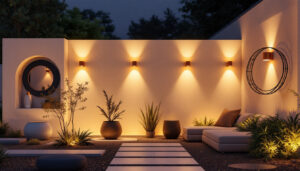

Lighting contractors play a crucial role in ensuring that spaces are illuminated effectively and efficiently. One of the key components in their arsenal is the Type G lamp, a popular choice for various applications. This article delves into the pros and cons of Type G lamps, providing insights that can help lighting contractors make informed decisions.
Type G lamps are a specific category of incandescent light bulbs that are characterized by their globe shape. Typically used in decorative fixtures, these lamps have a wide range of applications, from residential to commercial settings. Their design not only serves a functional purpose but also adds an aesthetic appeal to lighting installations.
These lamps are available in various wattages and sizes, making them versatile for different lighting needs. However, understanding their advantages and disadvantages is essential for lighting contractors to recommend the best solutions to their clients.
One of the most significant advantages of Type G lamps is their design. The globe shape provides a soft, diffused light that enhances the ambiance of any space. This makes them particularly popular in settings where aesthetics are paramount, such as restaurants, hotels, and residential homes.
Moreover, the variety of finishes available—from clear to frosted—allows contractors to tailor their lighting solutions to match the decor of the space. Whether the goal is to create a warm, inviting atmosphere or a modern, sleek look, Type G lamps can accommodate a range of design preferences. The ability to mix and match these lamps with different fixture styles, such as chandeliers or pendant lights, further enhances their versatility. Additionally, the unique globe shape can serve as a focal point in a room, drawing attention and adding character to the overall design.
Type G lamps are generally easy to install, which is a significant advantage for lighting contractors. Their standard base fits most fixtures, allowing for quick replacements and installations. This ease of use can save time on the job site, enabling contractors to complete projects more efficiently.
Additionally, the straightforward installation process reduces the likelihood of errors, which can lead to costly rework. This reliability is a key selling point when discussing lighting options with clients. Furthermore, the durability of Type G lamps means that they often require less frequent replacements than other types of bulbs, contributing to long-term cost savings for both contractors and their clients. As energy efficiency becomes increasingly important in lighting design, understanding the balance between the traditional incandescent qualities of Type G lamps and newer, more efficient technologies will be crucial for contractors looking to provide comprehensive solutions that meet modern standards.
While Type G lamps have many appealing features, energy efficiency is a critical factor that lighting contractors must consider. Traditional incandescent bulbs, including Type G lamps, are known for their relatively low energy efficiency compared to newer technologies such as LED and CFL.
As energy costs continue to rise, clients may be more inclined to seek out lighting solutions that offer better energy efficiency. Understanding the energy consumption of Type G lamps compared to alternatives is essential for contractors when making recommendations.
Type G lamps typically consume more wattage than LED or CFL options for the same level of brightness. For example, a 60-watt Type G lamp may produce a similar amount of light as a 10-watt LED. This difference in energy consumption can lead to higher electricity bills over time, making it a significant consideration for clients focused on long-term costs.
Moreover, as energy efficiency regulations become more stringent, the demand for higher-efficiency lighting solutions is likely to increase. Contractors should be prepared to discuss these trends with clients and offer alternatives that align with their energy-saving goals. Additionally, the environmental impact of energy consumption cannot be overlooked. By choosing energy-efficient lighting, clients not only save money but also contribute to reducing their carbon footprint, an increasingly important consideration in today’s eco-conscious market.
Another aspect of energy efficiency is the lifespan of Type G lamps. Traditional incandescent bulbs generally have a shorter lifespan compared to LED and CFL options. A Type G lamp may last around 1,000 hours, while LED alternatives can last up to 25,000 hours or more.
This shorter lifespan means that clients will need to replace Type G lamps more frequently, leading to increased replacement costs over time. Lighting contractors should weigh these factors when discussing options with clients, particularly for installations in hard-to-reach areas where replacement can be cumbersome. Furthermore, the reduced frequency of replacements with LED and CFL options can also lead to less waste, making them a more sustainable choice in the long run. By emphasizing both the economic and environmental benefits of longer-lasting lighting solutions, contractors can better guide their clients towards making informed decisions that align with their values and budgetary constraints.
The performance of Type G lamps can vary significantly depending on the setting in which they are used. Understanding these nuances can help lighting contractors make informed decisions about their applications.
In residential settings, Type G lamps are often used in decorative fixtures such as chandeliers, pendant lights, and sconces. Their ability to emit a warm, inviting glow makes them a favorite for living rooms, dining areas, and bedrooms.
However, while they enhance the aesthetic appeal of a home, contractors should also consider the lighting needs of the space. For instance, in areas where task lighting is essential, such as kitchens or home offices, Type G lamps may not provide sufficient brightness. In these cases, recommending a combination of lighting sources may be more effective.
In commercial environments, Type G lamps can be used to create ambiance in restaurants, hotels, and retail spaces. Their decorative nature can enhance the overall customer experience, making them a popular choice for businesses looking to attract and retain customers.
However, contractors should also consider the operational costs associated with using Type G lamps in commercial settings. High-traffic areas may require frequent replacements, leading to increased maintenance costs. In such cases, it may be prudent to discuss alternative lighting solutions that offer both aesthetic appeal and cost-effectiveness.
As sustainability becomes a more pressing concern, the environmental impact of lighting choices is an important consideration for contractors. Type G lamps, being incandescent, have a higher carbon footprint compared to energy-efficient options.
The disposal of Type G lamps can also pose environmental challenges. Incandescent bulbs are not recyclable and contribute to landfill waste. In contrast, LED and CFL bulbs often have recycling programs in place that minimize their environmental impact.
Contractors should be prepared to discuss these environmental implications with clients who are increasingly concerned about sustainability. Offering alternatives that align with eco-friendly practices can enhance a contractor’s reputation and appeal to environmentally conscious clients.
In some regions, there are regulations aimed at phasing out less energy-efficient lighting options, including traditional incandescent bulbs. Contractors should stay informed about these regulations to ensure compliance and to guide clients toward more sustainable choices.
Understanding the regulatory landscape can also help contractors anticipate changes in demand for different types of lighting, allowing them to adapt their offerings accordingly.
When evaluating Type G lamps, cost is a significant factor for both contractors and their clients. While the initial purchase price of Type G lamps may be lower than that of LED options, the long-term costs can differ dramatically.
The upfront cost of Type G lamps is often appealing, especially for clients on a tight budget. However, it is essential to consider the long-term implications of energy consumption and replacement frequency. Over time, the cumulative costs of electricity and replacements can far exceed the initial savings.
Contractors should be equipped to provide clients with a comprehensive cost analysis that includes both initial and long-term expenses. This information can help clients make informed decisions that align with their financial goals.
While cost is a critical factor, the value of quality lighting should not be overlooked. Type G lamps can enhance the aesthetic appeal of a space, contributing to a positive atmosphere that can impact customer satisfaction and employee productivity.
Contractors should emphasize the importance of investing in quality lighting solutions that meet the needs of the space, even if they come at a higher initial cost. This approach can lead to greater client satisfaction and long-term relationships.
Type G lamps offer a blend of aesthetic appeal and ease of installation, making them a popular choice among lighting contractors. However, their energy efficiency, lifespan, and environmental impact raise important considerations that must be addressed.
By understanding the pros and cons of Type G lamps, contractors can provide valuable insights to their clients, helping them make informed decisions that align with their needs and values. Whether used in residential or commercial settings, the choice of lighting should reflect both functionality and design, ensuring that spaces are illuminated effectively and beautifully.
Ultimately, the key to success in lighting contracting lies in balancing the immediate desires of clients with long-term sustainability and cost-effectiveness. By staying informed about the latest trends and technologies, contractors can position themselves as trusted advisors in the ever-evolving world of lighting solutions.
Ready to elevate your lighting solutions with the perfect balance of style, efficiency, and value? Look no further than LumenWholesale for all your Type G lamp needs and more. Our extensive selection of spec-grade lighting products ensures you have access to the highest quality options at wholesale prices that simply can’t be beaten. Say goodbye to middleman markups and hello to hassle-free bulk buying with free shipping. Don’t compromise on quality or cost—choose LumenWholesale for premium lighting that meets your project’s every demand. Wholesale Lighting at the Best Value is just a click away.

Discover the essential guide for lighting contractors on LED dimmer switches.

Discover how Light Head Light Head technology revolutionizes lighting installation projects by enhancing efficiency, precision, and design flexibility.

Discover essential insights and expert tips for lighting contractors in “Lamp Post: Lighting Contractors Should Know.” This article delves into the latest trends, technologies, and best practices in the industry, ensuring your projects shine brightly and efficiently.

Discover how LED workplace lighting is revolutionizing the lighting industry with its energy efficiency, cost-effectiveness, and enhanced work environment benefits.
Get notified when NEW deals are released.
Optimize your budget with wholesale discounts.
Only top-quality, specification-grade lighting products.
No additional costs at checkout - what you see is what you pay.
We understand the unique needs of contractors.